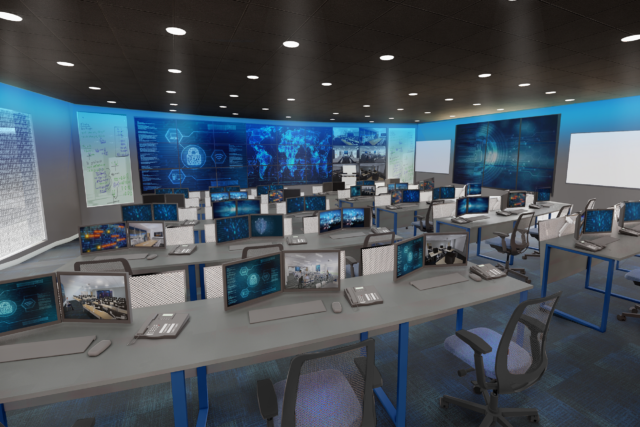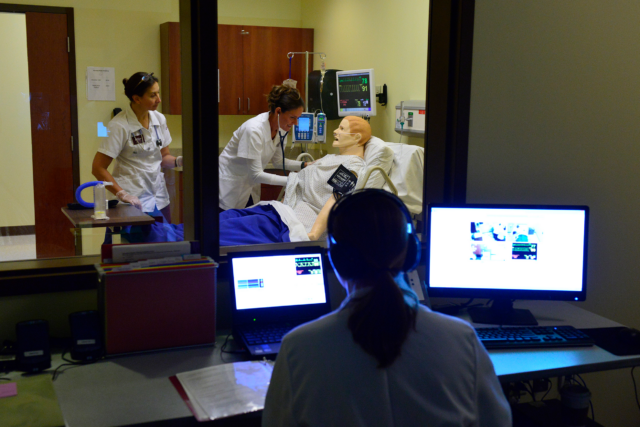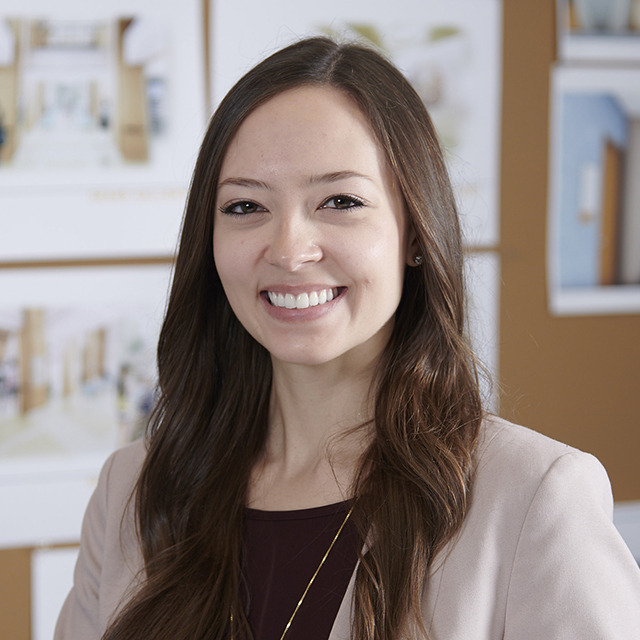Immersive Interiors: How Futuristic Simulated Learning Environments are Revolutionizing Education


In 1968, sci-fi movie-goers watched a space traveler make a video call to his young daughter back on Earth in 2001: A Space Odyssey. At the time, such technology was a thing of fiction, also depicted in The Jetsons and Back to the Future Part II. Today, many people carry the ability to make a video call in their pockets. From jet packs to credit cards, the “future” that science-fiction predicted is increasingly upon us as technology develops at an exponential rate.
The first two decades of the 21st century alone have seen the widespread adoption of the internet, pervasive smart phone use, 3D printing, artificial organs, digital assistants like Siri and Alexa, reusable rockets, robotic exoskeletons, and even the development of self-driving cars. With technology infiltrating virtually every aspect of our lives, how will education adapt? The use of tablets, interactive whiteboards, and creating multisensorial physical learning environments enhanced by technology. Immersive experiences are critical to learning. As illustrated by Edgar Dale’s “Cone of Experience,” humans remember 10% of what they read, 20% of what they hear, and 30% of what they see, but 90% of what they do.
The more senses that are stimulated, the more memorable the learning experience will be. The traditional classroom, however, has not always been conducive to this type of immersive learning. But now, with the strategic implementation of technology, the “futuristic” learning environments of science fiction can finally be brought to life. Nursing is an inherently fast-paced profession that requires quick decision-making in high-stakes situations. Nursing education, then, is challenged with preparing future nurses for these dire, often highly-emotional experiences. While students do spend time in a traditional classroom setting, patient interaction is critical for developing good bedside manner, learning to diagnose and treat illness and injury, and building empathy – a vital skillset when working with distressed patients and families.
Volunteer actors from the community, called “standardized patients,” are often utilized for practicing typical procedures. To supplement this need and to protect live patients from potential student error, universities now run simulations with high-fidelity mannequins, remotely controlled by a technician. They breathe, talk, have a pulse, and provide physiologic responses to student actions. By situating a mannequin in a simulated hospital room, the stage is set for a student to correctly diagnose and treat their “patient.” In one such simulation, I witnessed two students epitomize teamwork, communication, and decision-making while caring for their plastic patient, correctly diagnosing it with sepsis. From my vantage inside the control booth, I watched as the students entered the room, washed their hands (per protocol), and introduced themselves to the patient.
The technician voicing this particular patient gave it a rather uncooperative, and eventually hallucinogenic reaction (consistent with worsening symptoms of sepsis). The simulation ends with either a successful treatment or failure, which sometimes means losing a patient. The pressure is intense – but consistent with real-world scenarios. After the simulation, the students review video footage with their professor, allowing them to take note of what went right or wrong. This instant feedback is an invaluable tool for improvement. These spaces are incubators for safely building inter-personal skills, self-efficacy, and confidence when faced with uncommon or crisis situations.
Cybersecurity is a topic only recently popularized, an inherent necessity in the digital age. The Global Cybersecurity Institute at the Rochester Institute of Technology (RIT) is a pioneering program that partners with government and industry leaders to “implement solutions and commercialize research.” After in-person visits to professional training facilities, RIT and LaBella created a partnership to bring this caliber of simulation (along with improvements and lessons-learned) to an academic setting for the first time. The state-of-the-art “Cyber Range,” housed within a new 50,000 sq. ft. facility, will test students’ wits as well as their ability to remain calm during a cyber-attack.
The chamber, “capable of hosting more than 5,000 virtual machines simultaneously,” features an interactive video wall displaying world maps, weather, traffic, flight patterns, social media feeds, stock tickers, and news – all live. During a simulation, inevitably there will be a disruption – Twitter will explode, banks will react, the stock market will spiral, and phones will begin to ring. Colored lights shift from blue to red. The temperature in the room is programmed to rise. The desks, fitted with transducers, vibrate. A white noise machine fills the room with an audible ringing. All of these systems are linked through software to ensure a seamless and completely immersive environmental shift.
The chamber intentionally creates an atmosphere most people would find completely unnerving. Despite the anxiety-inducing environment, students must remain on-task, working together to strategize. Information is shared from computer desktops to the communal video wall, while small groups outline their approach on white boards with video capture. As the clock ticks down, the class must locate and neutralize the attack. After the simulation is complete, the room is returned to normalcy. Instructors emerge from their observation booth and review recorded video footage, noting lessons learned.
Nursing and cybersecurity are only two of a myriad of academic applications for emerging technology. Design students now have the ability to experience their projects virtually, as though they were walking through them. The aviation industry has long relied on flight simulators for training, but augmented reality can now also create realistic scenarios for flight attendants, safely simulating high-risk situations. Virtually any educational program can be enhanced with immersive environments, whether simulating interactions, procedures, or concepts that are too broad or invasive to accurately depict (the universe, the layers of the human body, etc.).
At Monroe Community College, a classroom configured to look exactly like a convenience store, complete with video surveillance, prepares students studying public safety for shoplifting scenarios. By engaging in “real-world” simulations, the traditional learning curve from academia to the workplace may become a thing of the past.
In the 1970s, oil prices skyrocketed in the aftermath of the Yom Kippur War and the Iranian Revolution. As people were urged to not “be fuelish,” an interest in renewable energy sources emerged. Vehicles were streamlined to reduce weight and become more fuel-efficient. This, and numerous other historical examples, demonstrate how international crises have been springboards for technological advancement. Will the COVID-19 era be remembered as the impetus for the next big technological boom? We can only imagine what the classroom of the future might look like, but it will undoubtedly be shaped by the technology of today’s daydreams.

About the Author
Barbara BurkeProject Associate
As a Project Associate, Barbara’s focus is on project ideation, design, team coordination, and client communication. Her expertise is in higher education, campus master planning, and liturgical design. Barbara leads our LINC (LaBella in the Community) community service organization, and has been recognized for her community engagement and philanthropy by many organizations, including the American Institute of Architects (2020 Emerging Architect of the Year and 2019 Volunteer of the Year) and the Cystic Fibrosis Foundation (named one of Rochester’s Finest in 2019). She is currently program director of the ACE Mentor Program of Rochester and loves engaging with students considering architecture careers. Additionally, the Rochester Democrat and Chronicle named Barbara a “Woman to Watch” in 2018.